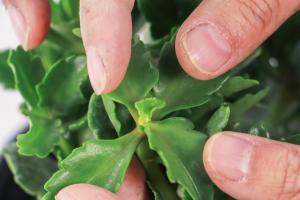How to Prune Newly Planted Fruit Trees
Pruning is an essential aspect of growing healthy fruit trees. Although pruning newly planted fruit trees may seem overwhelming, it’s critical to remove the extra foliage and encourage healthy development from the outset. As a beginner, you may be wondering where to begin, so we’ve put together a guide with some helpful tips for pruning your newly planted fruit trees.
Why Pruning is Important for New Fruit Trees
Pruning, also known as trimming or shaping, involves the removal of dead or diseased tissue, shaping the tree to promote proper growth, and controlling pests and diseases. In new fruit trees, pruning is critical to remove any damaged or broken branches, promote healthy growth and establish the desired shape of the tree.
The main benefits of pruning newly planted fruit trees include:
Encouraging a strong and healthy framework of branches
Increasing fruit production and quality
Controlling size and shape
Removing any dead or diseased growth to prevent it from spreading
Ensuring sunlight and air can access all parts of the tree
When to Prune Newly Planted Fruit Trees
The optimal time to prune your newly planted fruit tree is during the dormant season, which is late winter or early spring. During this period, the tree is not actively growing, and it is easier to identify dead or diseased branches. Pruning during the active growing season can harm the tree, as more energy is required to regrow the cut branches.
Tools You’ll Need to Prune
Before pruning your newly planted fruit tree, ensure that you have the necessary tools, which include:
Pruning shears - for cutting small branches up to 1/2 inch in diameter
Lopping shears - for cutting branches up to 2 inches in diameter
Pruning saw - for cutting branches over 2 inches in diameter
Gloves - to protect your hands from thorns and splinters
Safety glasses - to protect your eyes from debris
Steps to Pruning a Newly Planted Fruit Tree
Once you have the right tools, it’s time to prune your newly planted fruit tree. Follow these steps:
Remove any damaged or broken branches: These branches can be a source of infection and disease, so it’s best to remove them early in the tree’s development.
Remove any branches growing towards the center of the tree: Branches that grow towards the center of the tree can damage other branches or the trunk, and they can also block sunlight and air circulation. Removing these branches will promote healthy growth and prevent future problems.
Identify the main trunk and central leader: The central leader is the main trunk that is the backbone of the tree’s growth. The aim is to train the tree’s growth into one straight central leader with side branches. If there are multiple leaders, identify the strongest and remove the others.
Shape the remaining branches: Once you have identified the central leader, it’s time to shape the remaining branches. Cut back any branches that are too long or crossing over other branches. When choosing which branches to keep, aim for evenly spaced branches that grow outward to let sunlight and air reach all parts of the tree.
Conclusion
Pruning your newly planted fruit tree is essential to promote healthy growth and maximize fruit production. When pruning, it’s critical to have the right tools, prune during the dormant season, and remove any damaged or broken branches, central leader, and shaping the remaining branches. By following these steps, you’ll ensure the best health and growth for your fruit tree.

 how many times do yo...
how many times do yo... how many planted tre...
how many planted tre... how many pine trees ...
how many pine trees ... how many pecan trees...
how many pecan trees... how many plants comp...
how many plants comp... how many plants can ...
how many plants can ... how many plants and ...
how many plants and ... how many pepper plan...
how many pepper plan...

































